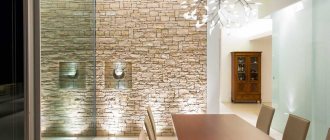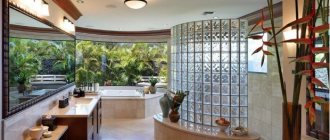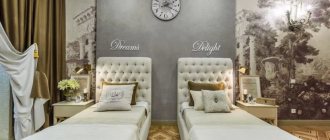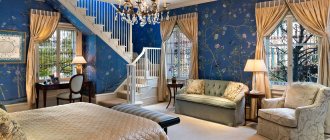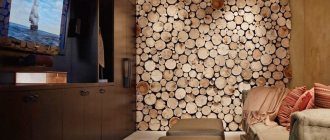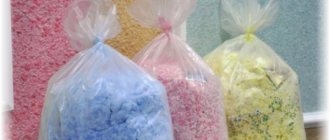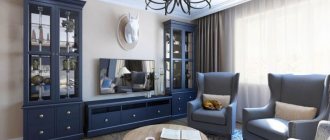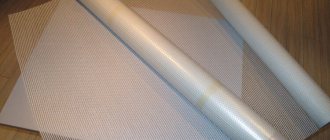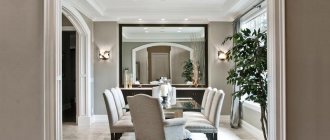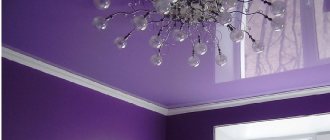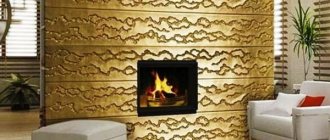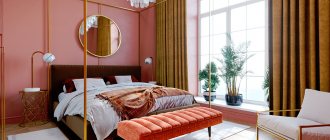During the construction of a private house, everyone thinks about how to decorate it beautifully inside and outside. Modern technologies in construction and repair do not stand still, as a result, more and more new materials are appearing. Each material has both advantages and disadvantages, some of them fade into the background, others gain well-deserved popularity. In particular, a sought-after and popular solution is finishing the house with clapboard, which can be used for both internal and external cladding of the building.
More information about types of lining
On the modern market of finishing materials you can find coatings made of wood, plastic and metal.
The most popular, of course, is wood siding, which is environmentally friendly, provides additional thermal insulation and looks great. Since wood siding is the most popular, we will talk about it in more detail below. The second most popular option is plastic lining. Conscientious manufacturers use high-quality plastic for its production, resistant to various negative influences: low and high temperatures, high humidity, and so on.
This coating is perfect if the room has a constantly high level of humidity. Most often, plastic siding is used on balconies, loggias and bathrooms. In some cases, external finishing is possible.
Metal cladding is not in great demand, but it is also used for finishing some rooms and external cladding of various structures. Metal panels are the most durable, so their scope can be very wide. However, due to its unpresentable appearance, such a coating is not used in all works.
Apron
Designers advise painting the facing board in the color of the kitchen unit. This combination, together with bright multi-colored tiles, will add brightness and comfort to the room.
But in this case, the tree must be coated with a special product to protect it from high humidity. And for more practicality, it is better to combine the finish with tiles in the most loaded areas, because a tile apron is one of the most practical solutions.
Types of lining profiles
Manufacturers produce different types of profiles, which differ in the type of locks, the size and shape of the back and front sides, and the type or type. If you are planning to decorate the interior of your car, it is better to choose the design of the room in advance - this will help you decide on the selection of the profile.
Standard class plate is often suitable for indoor use
Standard. The basic profile is trapezoidal, with the front side parallel to the back. There are two cross cuts on the back to prevent transportation. One of the edges of the rail is equipped with a corner, the other with a protrusion, together they form a “spike groove” type connection.
Eurolining is one of the most popular types of lining
Eurovision. They are distinguished by the presence of a corner connection and a longer “shelf”, thanks to which the joints between the panels are more noticeable. The home's interior features European millwork, which benefits from the clever design of the spires. There are vents at the rear of the track that are designed to detect excess moisture and prevent crown formation.
The smooth lines of the Softline car distinguish this type of profile from others
A fine line. This type of implant has rounded corners, which reduces the likelihood of runs and netting. But due to the elongated “shelf”, the seams between the panels are very noticeable. Softline Carrier is recommended to be used to decorate bathhouses and canopies.
“Brick” panels are widely used not only for finishing bathrooms and saunas
Calm. The characteristic profile of the profile is the absence of a bevel at the tenon, which makes the joints almost invisible after installation. The effect was used for cladding the façade to simulate “under bruises.” This allows you to increase the thickness of the panels - up to 25 mm.
The Calm Button is one of the most popular profile types.
Landxayc. One of the most expensive types of profiles, since their front side is subject to additional processing to create complex options. Also, using hot stamping you can get a panel with the effect of wood carving. A Landheads vehicle was used for interior decoration of the premises.
Blockxayc. The front side of the profile is rounded, which in its finished form will create the effect of wrapping cylindrical logs. Most often used to decorate the facades of buildings.
Imitation “under a cylindrical barrel” allows you to create original interiors
America. The main difference between the profile is that the back and front surfaces are not parallel to each other. The difference in thickness can be 6-8 mm, and the slope can be 5 degrees. 3a this creates the effect of installing boards on the outside or simulating cladding with siding panels.
American
Decorative finishing methods
If installation is carried out in a hidden way, it is recommended to use decorative fasteners. A hammer will ensure accurate fixation and decoration of the nail in the wood. You can decorate the corner between the boards using treated timber - this way there will be no gaps in the opening. If the natural color of the wood does not fit into the interior or does not add any color, then the lining is coated with paint. It’s better to match the decor or white. The nail heads that secure the starter board are covered with decorative corners. If there are no decorative slats, then the tops of the fasteners are removed with side cutters. All joints, internal and external corners must be closed. Bottom and ceiling plinths are also used for decoration. The interior can be radically changed by installing false beams on top of the lining.
Lining material and its advantages
At the moment, not only wood, but also its waste (MDF) is used for the production of cladding. Plastic models are also popular, attractive with their colors and low cost. We invite you to familiarize yourself with each of the options, which will allow you to choose the optimal solution, taking into account the properties and main characteristics of the materials.
Wood
The wooden carriage has found wide application in both external and internal decoration. The room, upholstered with a carriage made of natural wood, looks attractive and is easy to breathe in. The material is suitable for upholstering walls, for decorating a canyon or a bathhouse. But for rooms with high humidity, it is important to choose the right type of wood - only in this case will it last long enough.
Natural wood fills the house with a natural atmosphere
The wooden cart consists of the following types:
Pine is a light and resinous wood that has bactericidal properties and is resistant to pests and scales. Suitable for interior decoration of residential premises; for these purposes it is better to take a dryer, which is prepared in winter. It is not recommended for use in a bath, as resinous compounds are formed at high temperatures.
The ideal choice for the bedroom is pine.
Spruce is a tree similar to pine, but has a lighter shade. In the sun's rays, the coating quickly darkens, so the spruce machine is more suitable for dividing rooms, it is good for the rest of the day. A distinctive feature of wood is its high resonant properties, due to which the material is often used to decorate sound recording rooms.
Lightweight dry wood suitable for carpentry
Fir is a material that is often sold as spruce or pine and is difficult to distinguish by color. But there is more resin in a letter than in a spruce machine, and there is much less resin. The material retains its bactericidal qualities for a long time; it is excellent for decorating a balcony, house, veranda or loggia, where they are often found in other cities.
Excellent reliable characteristics make the letter an ideal material for decorating a loggia
Dub is renowned for its robust features. The wood tone is painted into the center of the dock, providing great design opportunities. But it is not recommended to divide the interior with a double wall - it will be too sentimental. Keep in mind that mold and rot rarely throw the cart out of oak, and wood is very easy to infest with insects.
Oak Wagon is one of the most useful separate materials
Sheet is one of the most reliable materials, which is not afraid of insects and is little affected by the brake. Thanks to its exquisite texture and wide range of colors, wood allows you to achieve an interesting effect in the interior. But if you select it based on the shadow, you can select it based on the shadow. Pepebird is much cheaper. The resin content in the material is high, but it comes out in a short time.
The high aesthetic properties of the cart crossbow justify its high price
Birch is the raw material for creating light and the aesthetics of a beautiful table. Its advantage is that the car is resistant to direct sunlight. But there is something less: wood is easy to free, so it can only be used in dry, warm and well-ventilated areas.
Birch groove looks attractive, but don't make any effort to resist bending
Ocin, alder, linden - their wood is suitable for cutting the core of their premises: the reason is poor mechanical safety. But the carriage of these tree species is widely used for lining saunas and canyons, as they emit high temperatures that are beneficial to health.
The carriage-covered attic provides a warm and welcoming atmosphere
MDF
The material only indirectly belongs to the category of wood: the raw material for making a car from MDF is inconspicuous wood waste or wood dust. After special heat treatment of the materials, the space will take up a lot of space, and the light weight and acceptable environmental characteristics will allow you to take advantage of this space.
The service life of an MDF car is not so long that it can be compensated for by a number of facts
The key advantage of the material is its wide range of colors, which will allow you to perfectly reproduce different images and facts. Manufacturers produce profiles imitating marble, stone and other materials, expanding design possibilities. I can popularize an MDF car by buying drivers with a small budget for repairs.
Large selection of cars in different colors and colors to suit the consumer's eye
Plastic
Plastic profiles or ATS panels fit well with wooden counterparts due to their low cost, ease of installation and durability. The plastic machine is suitable for both internal and external cladding - the panels can be used in any room. In this case, it is necessary to understand that the aesthetic characteristics of an automatic vehicle are much lower than its wooden counterparts.
Auto Plactikova: the ideal solution for covering a balcony or loggia
When choosing to use plastic panels, keep in mind that the material does not work at high temperatures and is easily deformed and burns out. Recommended for use in rooms with high humidity, such as in a bath or on a balcony.
Shiny plastic panels look attractive, but quickly lose their shine.
Classifying the material
When purchasing lining, the quality, cost of the material, and the room where the walls will be finished with lining will be taken into account. There are many options.
Natural lining is made from the following wood species:
- Conifers;
- Deciduous.
For example, hardwood panels are suitable for saunas and baths. Since they do not emit resin, like conifers, at high temperatures and significant temperature changes. Coniferous walls will not look neat and will be sticky. It is also easy to get burned by tar discharge.
Among conifers, only cedar from Siberia is a pleasant exception. Its wood is of a high class. The cost of such panels is decent. But the quality and durability will justify all the costs. Trees such as cedar, larch, pine, eucalyptus, and spruce are considered soft. Below is the wall decoration with clapboard in the photo, which will help you choose the design that you like best.
The most persistent are deciduous (ash, aspen, linden, alder). Linden is recognized as the best for baths. When the air temperature rises, it begins to release a slight odor, which has a positive effect on the human nervous system. According to quality, wood is divided into classes: premium/extra, a, b, c.
How to use lining for finishing
There is no single classical finishing method. Due to the versatility of wooden boards, they are used both for finishing walls or ceilings, and for decorative purposes.
Ceiling
If you want to diversify your interior, and suspended and simply plastered ceilings look banal, lining is your option. This coating is quite inexpensive, but requires special treatment to ensure its durability. Cover it with a special compound that will protect the coating from burns and moisture.
Walls
Some people believe that decorating walls with wood is only suitable for private houses and cottages. On the one hand, the closer you come to nature, the more natural the wood paneling will be. In addition, natural styles are often used in the design of summer cottages and country houses - country, chalet, Provence. Wood looks harmonious in them.
On the other hand, no one forbids giving the apartment the charm of a dacha. For urban conditions, a painted coating is most suitable. With its help you will create a unique and cozy interior.
In the photo there is yellow upholstery in the bedroom behind the headboard
Window slopes
Plastic slopes reduce the cost of finishing and are not suitable for all interiors, so in the interior of apartments and houses they often resort to finishing windows with lamellas.
The panels are attached in two ways: on the lathing (the same option is used for walls and ceilings) or on foam plastic.
For zoning
Zoning a room is an important part of creating a competent interior. And one way to highlight an area in a room is to use different finishing options. For example, wood panels painted in different shades of brown were used in this living room to cover the walls and ceiling of the sitting area. Their combination with the dark gray walls of the main area looks elegant and impressive.
Photo: Instagram corp_snab
As a decorative element
From lining you can make unusual decorative elements for any room - be it a living room, a nursery or a bedroom. For example, in this apartment they decided to decorate the walls of the children's room with mountain peaks.
In this living room, the upholstery is made in the form of panels on the wall behind the sofa and the same decor on the ceiling. Special wood treatment gave the effect of aging. This adds a certain charm to the interior of a country house.
But the upholstery was used to decorate the TV area in the bedroom. It was laid diagonally to highlight this section of the wall.
Furniture finishing
An unexpected use of upholstery is in decorative elements of furniture. For example, part of the bed was made of wood panels.
When choosing a material for wall cladding in any room, always pay attention to its advantages and disadvantages and study examples. We have prepared for you a summary table of the pros and cons of the finishing coating.
Advantages and disadvantages
| Environmental friendliness. Since siding is a natural material, it can be used in residential areas. | Not a very easy installation: If the walls are concrete, you will need to grind the wall. |
| Availability - the price of the coating is low compared to analogues available on the market. | Low moisture resistance - special treatment required. |
| Possibility of finishing - it is easy to paint the upholstery in any color and make the interior more interesting. | Fire Hazard: All wood burns easily. But you can protect your home by covering your siding with special compounds. |
| Relevance: upholstery is always in trend. Especially now, when they began to use it in almost all styles: from Scandinavian to country. | It's difficult to replace upholstery - it's not wallpaper or paint. Replacing this coating will require more effort. |
Tips for choosing a topcoat and interesting ideas
A wide selection of coatings allows you to choose absolutely any color and texture for the lining. In a country house, it is better to give preference to the most durable and unpretentious compositions that do not have to be updated frequently.
If the finish is new, then it is worth preserving its natural color and choosing transparent products for processing: varnishes, azures.
If the panels have many defects or an old coating, then thick, opaque paint is indispensable. You can improve the appearance of the base surface by removing the top layer of wood, but this is too labor-intensive and time-consuming.
Unusual combination of paint shades for lining
The colors and shades of the lining can be combined in the decoration of one room. This technique allows you to divide a spacious room into zones. Decorate or diversify the design, place accents.
Color accents in clapboard finishing
Due to the color of the finish, you can achieve some visual effects. Light shades expand the space, dark shades, on the contrary, make it smaller. The white ceiling looks higher than the brown one.
The color scheme for the lining can match the palette of shades used in the interior or contrast.
Harmonious combination of color palette of textiles and walls
Options for room design using lining
A modern approach to interior design, combined with a new look at the possibilities of cladding, allowed designers to develop many solutions. Today, this material is used for cladding not only walls, but also ceilings, used in residential premises and decorated in different styles. There are design solutions where the coating acts as a floor covering, albeit for a small part of the room.
An effective use case is to lay the slats horizontally. The canvas has an unusual and very elegant appearance, providing an unusual and attractive surface appearance.
At the same time, it is not customary to cover the entire room with clapboard. Only one wall is cut out (very rarely - two adjacent ones, if their total area is small). Most often, only a small section of the plane is sheathed: they create a decorative panel above the head of the bed, create a platform for hanging a TV, separate a section of the ceiling slab for installing a chandelier (or group of lamps).
Many users look at the interiors of different rooms - what the lining looks like in the bedroom, kitchen or living room.
However, it is more correct to take into account the laying technique, type of processing and size of the canvas. This determines the decorative effect and allows you to create sections of walls or ceilings that attract attention and decorate the room, regardless of its purpose.
Living room
The coating goes well with wallpaper. If you make a panel at the bottom of the wall, the room will turn out to be especially cozy and welcoming.
Everyone is already tired of boring, monochromatic living rooms. Let's add some color to the interior using lining and play with contrasts? For example, you can trim the walls with clapboard and paint them in an unusual color (complex dusty shades look most interesting, as in the photo above), and leave the floor or ceiling white. Fresh and unusual. The reverse scheme also works: light wallpaper - snow-white lining.
Kitchen
This material can be used in kitchen decoration: both on the walls and on the apron. Of course, when laying the cladding in the work area, you need to take care of additional processing of the wood. This coating will fit into a modern kitchen design and will withstand country style.
Inside the kitchen, you can cover everything with clapboard or just focus on the dining area. The lining also looks beautiful on a kitchen apron. Do you want problems with cleaning? Treat with an antiseptic and coat with moisture-resistant paint.
In a country-style kitchen, an untouched coating looks harmonious; in other cases, it is better to paint it. For the Scandinavian direction, white, gray and beige colors are suitable, for Provence - delicate pastel colors. For a sustainable look, choose brighter shades such as green or brown.
Hallway and corridor
In panel houses, corridors are often narrow and uncomfortable; Horizontal paneling of short walls will increase the space and make it more pleasant. On long walls, attach the slats vertically or diagonally. The panels look interesting: for example, from the boards you can create the outlines of mountain peaks or a city landscape.
An added bonus in the hallway: you won't need special hardware to hang an extra hook or shelf.
Children's room
The use of environmentally friendly materials is especially important for children, so wooden panels come first. In addition, its variability and ease of processing allows you to create extravagant patterns on the walls and ceiling, which is a plus in the design of a nursery.
Bedroom
The most effective placement of upholstery on a bedroom wall is behind the bed. Accentuate a wall or adjust the geometry of a room with matching stripes.
An interior with a natural tone board in a bedroom with white furniture looks fresh and will remain relevant for many years.
The photo shows a country style bathroom design
Balcony
Wooden panels are very popular for decorating the walls of balconies. Budget-friendly, stylish, can be varied with paint - these are the factors that determine such a high demand for this material. Also, designers often use lining in the design of balconies and loggias.
Bathroom and toilet
Wood materials have low moisture resistance - that's a fact. But thanks to special impregnations, they can be used for finishing walls in wet rooms, for example, in bathrooms or toilets.
Headboard
Typically, the interior of a country bedroom is done in rustic styles, and therefore, to add authenticity, you can do a little work with the headboard. Moreover, this will take no more than half an hour if you have some lining in stock.
The easiest option is to coat the paneling with a dark varnish, for example, rosewood color, and connect the boards together using screws. By the way, it is not necessary for everything to fit perfectly together; you can make a slight asymmetry. This technique will look much more interesting.
Another option for decorating a bedroom with clapboard is to simply decorate the entire wall behind the bed with it.
How does installation work?
Everything is in order.
The order is completed. Without it, channels appear where moisture accumulates, moisture rises in the room, fungus may develop, and the wall will begin to rot. Therefore, repair work is carried out according to all rules. Even if the walls in the house are perfectly smooth and made of wood yourself, before covering the wall with clapboard, you need to install the sheathing.
Forced ventilation ducts are installed in clapboard wall decoration (they are specially cut from boards). No turning anywhere. It should be made of wood, just like the panels. This is important because the material acts as a shock absorber. This is especially important when using minimal materials on the walls. The spaces (deformations) between the wall itself and the boards perform the same function. Connectors have a diameter of 5 mm or more.
For example, it is not uncommon for wooden boards to be placed on steel sheathing (for example, when installing drywall). After a short time, the material begins to expand and cracks appear. But after removing the baseboards a few years after installation, it turns out that the smooth surface of the wood lathe is only slightly worn around the edges. Whatever type of turning it is, the basis for its installation is the same for everyone - the turning strips should be placed strictly perpendicular to the boards.
Don't forget about the bars around the edges:
- The ends of the boards should not hang down;
- When installing the cladding diagonally, its sheathing must have a frame (solid);
- The thickness of the planks is from 20 mm, width - from 30 mm;
- The size of the beam installation step is at least 4 boards wide;
- At the ends, the attachment points are placed at a distance of 50 mm.
Types of installation
Of course, before you start covering the walls with wooden boards with your own hands - an example in the video, you need to decide on the type and direction. Be it horizontal, vertical, diagonal, herringbone, diamond or brick, mixed.
Horizontal installation is considered a classic (in Russia this is true). It has a positive effect on expanding the space of the room. A small drawback that can be avoided (when installing the grooves are directed downward) is dust and moisture that accumulates at the joints of the boards. Following this recommendation, start styling from the top.
Vertical placement is most popular among Finns. Makes ceilings higher. This effect is especially important for low rooms. Installation of wall decoration with clapboard begins from the most difficult angle.
Diagonal (and mixed) installation is distinguished by directionality and aesthetic appearance. Installation is much more complicated than previous options. The interior, decorated with wood of different species and shades, looks especially bright and unusual.
It is easier to install wooden panels on walls horizontally using planks or vertically.
The vertical version of clapboard cladding is simply necessary for rooms with high humidity, places where frequent condensation is possible (bathroom, kitchen, etc.). Since the horizontal method will not protect from excess moisture. The type of installation, when installing boards vertically, determines whether the tongue and groove will be cut, in what place, and for how long.
When installed horizontally, the end result looks very attractive. Here the lining is installed, pointing the ridges upward to protect the grooves from water accumulation. This will prevent the appearance of rot, microbes, and fungus in the future. When installing the first bottom panel, the side of its groove is cut off. This removes the pocket that will collect moisture.
The least used option is the diagonal siding placement option. It is more difficult, with a lot of material waste. From the point of view of beauty, it is practically no different from previous installation methods. Decorating the walls with clapboards with your own hands will add zest to the room.
There are shaped styles: herringbone - a little difficult, but possible. A vertical sheathing is required on which the pieces of material cut out according to the template will be attached.
A more complex lining is wall lining in the shape of a diamond. The rotation is made in the form of a cross in a frame. The rods are attached diagonally in its quadrants. The work that goes into installing diamond pavement is well worth it. The result looks incredibly elegant and expensive.
Choosing the method of installing the lining
There are three ways to attach the cladding to the walls: glue, nails and clamps. The choice depends on the operating conditions and the condition of the walls.
You can stick the lining in a dry room on smooth walls. If it is thin (13-15 mm) and small in width (80-100 mm), this can only be done with glue. For larger sizes it is better to secure it with your nails, but you will need 30% less.
Wall cladding is not boring at all. This is an ideal finishing option for a wooden house.
You can also glue the coating to relatively flat walls, but only minor deviations are allowed. This trim panel is not very thick and will bend, but due to the natural elasticity of the wood it may tear into voids. Therefore, if the walls are not perfect, it is best to use a combination of glue and nails.
Types of cladding and accompanying profiles: Standard, Shtil, Eurolining, Softline, Landhouse, American, Blockhouse, Double-sided
Nails or screws can be used to attach the cladding either directly to the walls or to a lathe. The second option is chosen due to uneven walls or the need for thermal, acoustic and moisture insulation. Nails can be driven into a tenon, groove or face (photo below right). The first option is called secret, the second - traditional. It is impossible to apply any coating to the tenon/groove, but only some types of it (with sufficient protrusion/recess dimensions). And this option is also only available for dry residential premises.
Methods of fastening the lining: with clamps and self-tapping screws
Clamps (or strips) are special fasteners for hidden installation of corrugated moldings (photo above left). Some types of cladding fall into this category. If the material you choose has a large, strong tongue/spike, it can be secured with clamps. These mounts are usually attached to the lathe, but are also possible on a plywood wall.
How to create a sheathing for fastening lining
Preparing walls for cladding is the most painstaking process. You'll have to tinker with creating a custom design. General recommendations:
- Treat the wood with fire-resistant impregnation and antifungal agents.
- Make sure that the slats are positioned strictly perpendicular to the decorative boards.
- it is necessary to maintain a uniform distance between the rails, the pitch of which is 40-50 cm.
- Leave some space between the floor and ceiling. This recommendation is especially relevant for wooden houses that are constantly subject to shrinkage.
- It is necessary to carefully check the uniformity of installation of the frame; for this, use a plumb line and a spirit level.
- If a gap has formed between the slats and the wall, then it must be filled with prepared forms.
Important! The design of the machine allows you to equip the walls with an additional layer of insulation. Insulation is attached between the formed racks.
Choice of material for the frame
The frame for cladding mainly consists of two types of material - a wooden block or a metal profile.
Wooden block. The most popular material for the frame, because it is easier and faster to attach the sheathing to it. Suitable for dry rooms, for walls with minimal humidity. It is used not only in the interior, but also on facades. A cheaper option than a metal frame.
Metallic profile. Also a reliable frame option. The same metal profile is used to assemble frames for drywall. Suitable for any type of room. However, due to the high thermal conductivity of metal, it is necessary to take into account how cold the walls are. From a cold wall, the metal profile will transfer more cold to the front surface of the wall.
frame made of metal profile
As in the first case, in the second case it is recommended to insulate the walls inside the frame with special materials to fill the gap between the rough surface of the wall and the lining.
Calculation of material for sheathing lining
To calculate the required amount of timber or profile, you should decide in which direction the platband will be mounted.
The cladding is mounted in four directions:
- Vertical
- Horizontally
- Diagonally
- Mixed method
Find out more about these areas below in the article.
vertical, horizontal and diagonal slats
The most optimal step on the wall, between frame profiles (bars) should be from 40 cm to 60 cm. A profile must also be fixed along the perimeter of the wall or ceiling; this should be taken into account in the calculations. Having measured the dimensions of the sides of the wall or ceiling, taking into account the step between the rotary strips, draw a grid of your frame on paper and calculate the total length of the profile (beam) you need. Metal profiles and strips are always bought and sold in specific sizes from 1.5 meters to 2.5 meters depending on the manufacturer. Dividing the total length of the material by the length of the profile will give you the required amount of material.
If the profile is installed on hangers, then their pitch along the entire length of the rod is also from 40 to 60 cm. As a result, a rod 240 cm long will require 4 hangers, when installed with a pitch of 60 cm. For each hanger, 2 to 4 dowels are required , if you are attaching the frame to a stone wall. And from 2 to 4 wood screws for attaching the rod to the hangers. To secure a metal profile to hangers, you need to purchase metal screws, which are commonly called “bugs.”
Some laying rules
In order not to spoil the finished repair, certain rules are followed when installing the coating:
- Do not install directly on damp and porous walls or sheathing;
- The wall must be properly prepared;
- The best option is cement plaster;
- If the room is dry, then the walls are smooth and plastered - the bars are fastened with EU staples (used for drywall). These are perforated plates.
To ensure that everything was done expertly, the smoothest bars were chosen. The brackets are attached to the walls, the central plank is installed (placed first), along the edges of which the brackets are folded, and the ends of the plank are fixed. Next comes the bending of the intermediate brackets, the bar is completely assembled (without deformation). Subsequent planks are aligned along the central one, located precisely in this plane.
The safest way to prepare walls for cladding is to make a vapor barrier. For some rooms this is extremely necessary (kitchen, sauna, corridor, etc.).
Do-it-yourself clapboard wall decoration requires maintenance.
The wall must be completely flat, the insulation on top must be foil side out. The insulating material (on a special tape) is laid with an overlap (15 cm). Next comes the fastening of plywood siding (of the required thickness, at least 8 mm) to the wall under the bars. Then the rotating beams are attached to them.
This results in a well-ventilated space gap (between the lining and the insulation).
The basic principle of laying the coating is to start work from the most difficult small areas; ending with large, simple sections.
When the wall is already covered with clapboard, the baseboards are fixed. Covering walls with your own hands helps you save a lot and find interesting solutions. An analogy with laminate is appropriate here.
Coating
The final step is to coat the wood with special varnish and varnish compounds to give the material an appropriate shade and enhance its performance. For this purpose, several types of paint and varnish coatings are used:
Applying paint improves the aesthetic characteristics of the car
- Alkyd lasts for a long time, has a sour and unpleasant odor, but perfectly protects wood from moisture.
- Acrylic - quickly saves, due to which it is often used for indoor work. Attracts attention with a wide range of colors, well conveys the temperature range and the influence of humidity.
- Water-based paint is environmentally friendly and safe to use. It sits down quickly, there is practically no click. The main disadvantage is the high cost.
- Polyurethane is a universal coating that prevents wood from yellowing. Has rich translucent shades.
The sanded surface is processed after two to three cleaning cycles after installation is completed. The paint is applied in two layers: before applying the second surface, the tops are sanded to eliminate errors.
Finishing after installation
If PVC or MDF panels do not require finishing, the wood is treated to prevent premature destruction in order to provide additional fire-retardant and decorative properties.
The first method is coating with protective impregnations. They protect wood from photoaging, moisture, damage by fungi and insects. They are made on the basis of bitumen, acrylic, solvents, oils or minerals. During production, lining produced in Europe is subjected to impregnation - treatment with compounds in autoclaves under pressure. The substances penetrate wood to a depth of 20 mm.
The second type is treatment with tinting agents or stains. The structure of the wood is emphasized by pigmented water, alcohol, oil, acrylic or wax compounds. The whitening effect is achieved by stains based on acids or hydrogen peroxide.
Water-based varnishes are popular for finishing wooden lining indoors. Glossy, matte or semi-matte surfaces are protected from the harmful effects of moisture, but at the same time can “breathe”. Alkyd and polyurethane varnishes are durable, do not fade in the sun, and form a water-repellent film.
A popular type of finishing is painting with oil, latex, acrylate enamels, decorative glazes, and water-based compositions. The rich range of shades, resistance to external influences, and moisture-proof properties of the dyes allow them to be used for decorating linings inside the dacha. Before painting, it is recommended to prime wooden surfaces. Apply the compositions in several layers.
What nuances should be taken into account when working with lining
Sheathing is a board of varying thicknesses made from different types of wood. This material got its name from the place where it was first used. These are train cars whose interior walls are lined with small wooden boards. Today it is fashionable to cover the walls with boards in the bathroom, as well as in the sauna or gazebo.
It should be borne in mind that decorating walls with clapboards with your own hands requires an integrated and balanced approach. Please pay attention to the following details:
- Packaged cards should be stored horizontally on the mat.
- The humidity in the warehouse should be within normal limits.
- Do not store in direct sunlight on the packaging.
- It is important to pay attention to the expiration dates indicated on the packaging.
- The cost of 1 m2 of distilled linden, which can easily withstand temperature changes and high humidity, costs 500 rubles, and for wall cladding in the main rooms of the dacha, on average, you can leave a smaller amount - 300 rubles per m2. Important! The price of the material directly depends on the quality of the wood.
On a note! Wall cladding is purchased with a reserve of ten percent of the total area. It should be remembered that the width of each element is measured by the internal depth, so it is necessary to subtract 10-12 mm from the depth of the groove.
Type of lining
There are 4 varieties:
- Extra;
- Class A;
- Class B;
- Class C.
The boards are sorted depending on the presence of resin pockets, pronounced blueness, knots, cracks, and roughness (poorly treated areas). The extra grade is characterized by the complete absence of prostrog or minor defects on the front side. There may be one light knot per linear meter. For class A, the presence of microcracks and small untreated areas is allowed. At the longitudinal ends, cracks no longer than the width of the board are allowed. There should be no more than a fifth of all boards made of core profiles. It is acceptable to have 3 knots on one linear meter. As for class B, the presence of 2 falling knots is allowed on one such board. Cracks up to 3 cm are allowed on the front side, and cracks of any size on the front and back sides. All panels can be made from core, with resin pockets. Class C includes all boards that are not included in the categories from extra to class B, but are suitable for use. Rottenness is not allowed.
There is old clapboard on the walls. How to clean it? Restore original color?
To do this, you can use a flat pumice stone or an abrasive wheel. As a result of sanding, the shalevka loses all its protective properties, which means it must be coated with an appropriate antiseptic solution, which not only plays a protective role, but also preserves all the properties of the paint.
Once the preparation is complete, the paint can be coated.
If you use classic paint, it will preserve the original upholstery pattern and will not require additional finishing. If the coating is opaque and completely hides the wood grain, to achieve an attractive and original look, you should take care of additional decorations, for example, elements for decorating windows and floors.
Advantages of the material
Lining made of natural wood has a number of advantages that are known to many. Let's look at the main ones:
- Environmentally friendly finishing material;
- There are no emissions of substances that negatively affect humans;
- Allowed for use in children's rooms and rooms where allergy sufferers live;
- Duration of operation (if you periodically carry out special processing of wood, it is maintained in ideal, new condition);
- Wood paneling does not burst or scratch;
- Not afraid of damage (minor mechanical);
- It is easy to realize any design fantasy (due to different wood species, their coating with varnish and paint);
- Withstands temperature fluctuations (certain types of wood);
- It is moisture resistant;
- Modern types of panels have high fire safety;
- Withstands significant influences both indoors and outdoors (one of the main differences from plastic lining).
Interesting ideas for using lining in the interior
Bedroom at the dacha clapboard
Do-it-yourself step-by-step finishing
Proper preparation of all surfaces, structural elements, cladding, and fasteners will allow you to create high-quality clapboard surface finishes. All calculations and measurements are required according to:
- selected type of canvas;
- room dimensions;
- the presence and location of door, window openings, niches or other objects in them.
Fastening the lining is the penultimate stage of finishing before covering with strips, skirting boards and other auxiliary parts.
Frame installation
You can fasten the lining without it, but there are no guarantees that the material will retain its qualities for a long time and will not begin to deteriorate due to the lack of a ventilation slot on the back side. Therefore, craftsmen recommend making load-bearing sheathing regardless of the presence of insulation between its bars.
Installation instructions:
- Room measurements. The room is measured around the perimeter, all key locations of corners, door openings, windows, etc. are marked.
- Calculation of the amount of material required for sheathing. To do this, you need to multiply the perimeter of the room minus the openings by the number of steps in the arrangement of the bars. This is done by fixing the panels vertically.
In the case of horizontal calculations, the calculations will be a multiplication of the perimeter of the room, divided by the step width (the number of vertical beams is determined), by the height from the floor to the ceiling. In this case, the amount of material that fills the openings of windows and doors according to the plan is subtracted.If a diagonal or combined method of fastening cladding panels is assumed, then the calculations (as for standard fastening) are simply multiplied by the required coefficient, since the bars must be spaced more often.
- Marking. Using a building level and a plumb line, a control zero line is applied on the wall opposite the door. For vertical fastening - at a distance of 5-6 cm from the floor and ceiling for the first and last plank. For horizontal - in the corner, at a distance of 5-6 cm from the adjacent wall. Tip To facilitate subsequent work on the installation of other sheathing elements, you can stretch a fishing line between the control beams. It will mark the level along the length or width of the wall.
- Measuring and cutting bars. Since it is better to save resources by gradually cutting the bars to the required length, this must be done accurately and from fresh measurements. Let the labor intensity increase a little, but due to this the surface will be perfectly flat.
- Fastening the bars. A block of the required size is leaned against the wall at the marking site. Using a drill with a thin drill, approximately 2.1 mm, as for screwing self-tapping screws into wood, holes are drilled in the block and wall to the depth until it stops. Then these holes are re-drilled with a thicker one (according to the diameter of the unopened dowel casing), and the dowel casings are inserted. Only after this the element is leaned again in the same place and secured with dowels.
Actions are carried out until the installation of all the necessary load-bearing elements of the sheathing is completed.
Before installation, all wooden materials must already have a dried protective coating against rot and harmful microflora.
another article
Fastening the panels
Depending on the orientation of the direction of the canvases, the lamellas can be attached in several ways. The installation mechanism will depend on:
- depending on the type of fastener;
- grade, type of lining itself;
- features of the room being finished, its microclimate, and other characteristics;
- the presence of a heat, steam, waterproofing layer under the finish.
In general, fastening is a cyclical process:
- The location of the first board on the sheathing is checked by level.
- Fixation is in progress.
- The ridge of the next one is inserted into the groove of the previous panel, and the maximum joining density is achieved (how to properly join lining panels?).
- The second board is fixed in the same way as the first, and the next one is taken.
- The process is repeated until all necessary surfaces of the room are completely covered.
separately
We put the paneling on glue
You can glue the lining onto walls that have been previously lined with plywood, chipboard, OSB or boards. All these materials have parameters similar to wood. This will ensure that the glued trim will adhere securely.
One of the ways to install lining on walls is with glue
You need quick-setting carpentry glue, but universal glue will also work. It is more convenient to work if it is in a tube for a mounting gun. The glue is applied to the wall with a snake. For larger thickness/width of the lining, apply glue to both the wall and the plank.
Which rooms are suitable for cladding?
The lining is made of wood. This means that the room should not have high humidity or frequent temperature changes. Use of the material in the bathroom is contraindicated. In the kitchen, lining is also undesirable, since the air often contains tiny particles of fat that settle on the walls.
The sheathing fabric will have to be washed frequently; fat will accumulate in the cracks and polymerize, creating unsightly layers. This is a long process, but sooner or later the layers will become noticeable.
The best option is to cover a bedroom or living room, decorated in the appropriate style. A decorative panel is created, a wall is created, or the entire wall is sheathed.
The color of the canvas is chosen based on the appearance of the room and the colors of other interior elements.
How to beautifully cover walls?
Before sheathing a house with your own hands, you need to take time to acclimatize the boards in the room where they will be installed. This will take at least two days. Otherwise, the board may warp and become deformed on the wall. It is not recommended to carry out installation at sub-zero temperatures or high humidity.
Stages of lining installation:
- Preparing the walls. It includes insulation and waterproofing.
- Selection of materials, preparation of tools necessary for work.
- Choosing a cladding method. There are four of them: horizontal, vertical, diagonal, shaped.
- Installation of the sheathing on which the lining will be mounted. If necessary, electrical wiring is placed under it.
- Wall covering with clapboard.
- Applying a finishing decorative or protective coating (varnish, paint).
- Installation of sockets, lamps.
- Installation of skirting boards, window and door frames.
Outside
Step-by-step process of cladding the outside of a house with clapboards:
Installation of a vapor barrier layer. It can be made of several materials: film, foil or roofing felt. The purpose of the layer is ventilation and steam removal. The material is attached to wooden slats 2.5 cm wide, the distance between them is 1 m. A vapor barrier is attached to the top with nails. Holes 2 cm in diameter are made on the entire surface for air movement.
Installation of the frame. For its construction, boards 5 cm thick and 10 cm wide are used. They are placed vertically on the wall, with the end facing the surface. The distance between the frame elements is slightly less than the size of the insulation sheets.
Thermal insulation of walls. The choice of material and its thickness is made based on the temperature indicators of the climate of the area. When working, it is necessary to avoid gaps between the sheets of insulation. If there are several layers, then the joints should be staggered. If the insulation is placed correctly, without gaps and tightly, then additional fasteners are not required. Details on how to insulate a room when working with lining are described in a separate material.
Creating a waterproofing layer
When placing the film, it is important that the rough layer is located outward - this is the only way the material does not allow water to pass through and removes vapors to the outside. Film fastening option - staples
All seams are overlapped and additionally secured with tape.
Installation of the second frame. 3x5 cm wooden slats are nailed to the first base for additional ventilation. At the bottom of the perimeter of the house there is a fine metal mesh to prevent rodents.
Finishing the facade with clapboard. All boards are pre-measured and cut to size. Work is carried out from the bottom up. The first board is positioned with the groove up and the tenon down. It is carefully leveled and only then nailed or secured with a special clamp. The next plank is located in the groove to the previous one. To make it tight, you need to hit it lightly with a mallet. When the grooves of the lining match, the second rail is secured. Subsequent elements are mounted in the same way.
Fastening the boards. When the entire lining is installed and fixed, it must be additionally secured vertically, one board over another. Window and door openings also need strengthening.
Installation of decorative elements.
Painting, varnishing or protective coating.
